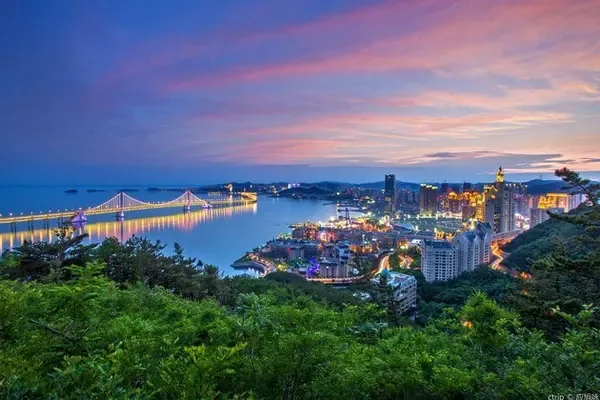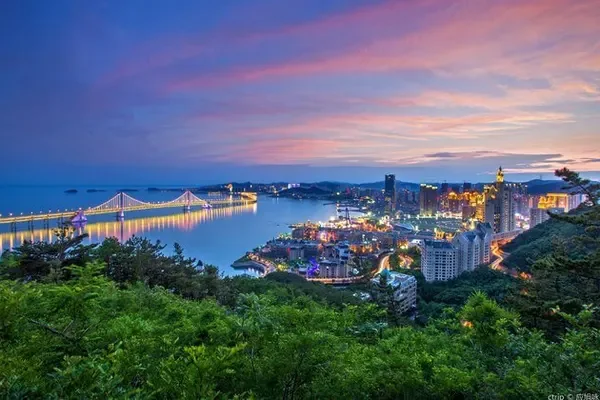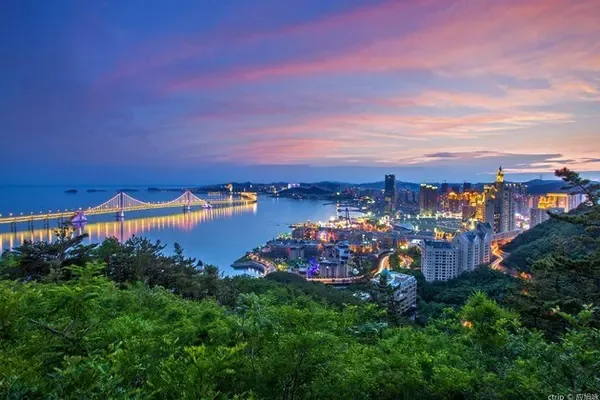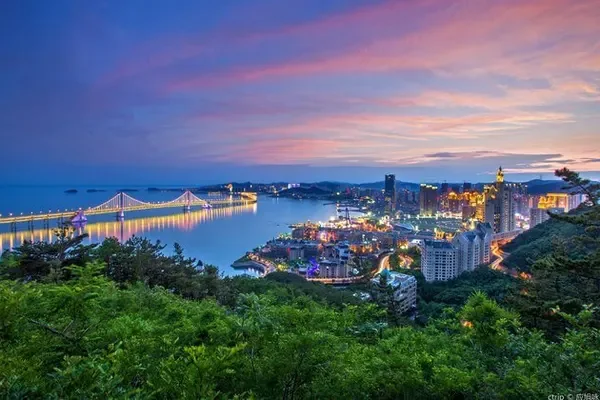On June 2, 2021, four of us self-proclaimed young sixties, started a self-driving trip, Beijing-Tibet.
Preparations for entering Tibet: 1. Except for the team leader, each person should take Rhodiola rosea 20 days in advance.
2. Prepare headache powder, glucose powder, oxygen pillow and purchase oxygen cylinders in case of emergency.
3. Take astragalus, red dates and longan soaked in water throughout the whole process, and supplement with multivitamin tablets every day.
4. The leader brings a full set of photography and video equipment (Canon), and the other three have mobile phones and cameras.
5. You must bring the border passes of Tibet and Xinjiang. (It is best to do it at the departure point)
6. Bring thin down jackets, jackets and a full set of summer and autumn clothes.
7. Replenish instant noodles, food, fruit and purified water in the car at any time.
Route to Tibet: G214 Yushu to Qamdo via Leiwuqi.
Due to the long time and many places and pictures, this travel note is divided into four sections.
Itinerary (1) Transition from plain to plateau (published on July 16, 22)
Itinerary (2) Gradually enter the plateau Gannan Qinghai
Itinerary (3) Tibet Qamdo, Medog, Ngari South Line G219—Yecheng
Itinerary (4) Xinjiang Desert Highway, Duku Highway, S101 Provincial Highway and return to Beijing via Inner Mongolia G7
Itinerary (2) Gradually enter the plateau Gannan Qinghai
Zagana
Day 9, itinerary and destination: Longnan-Zhayana on June 10th, this is an exciting and tangled day, from the plains to the plateau, one step closer to Tibet, I hope we will miss the Gaofan.

Zhagana means "stone box" in Tibetan. Located in the valley of Yiwa Township, more than 30 kilometers northwest of Diebu County, Gannan Tibetan Autonomous Prefecture, it is currently a national 4A-level tourist attraction, as well as a "National Geopark" and "Global Important Agricultural Cultural Heritage Site". The average altitude is 3500 meters. We arrived in the afternoon of June 10th and went directly to the village. There is no admission fee for the scenic spot.

mother and son intoxicated by the beauty

Sister Yu is so focused!

Zhagana in the morning mist is like a fairyland, so beautiful that it is known as the "Kingdom of Plants" and "Eden of the East".

This small Tibetan village surrounded by cliffs has beautiful scenery and beautiful scenery. "China National Geographic" magazine released in 2009 the search for the top ten "non-famous mountain peaks", and Zhayana Mountain was ranked fourth on the list, just like a paradise.

We stayed at the Friendship Inn in Zhagana. There are upstairs and downstairs options. The rooms are comfortable and the price is very beautiful.

Zhagana’s dinner is 143 yuan for four dishes and one soup. It is a restaurant opened by locals. We all like spicy food, and spicy food always accompany us when we travel.

When we left Zhaga in the morning, the two Tibetan children called us grandpa and grandma. When it comes to taking pictures, look at their signature poses, haha, another wave of candy and food.
Friendly reminder: I learned before posting this travel note that Zhayana has now started to charge scenic spot fees: 80 yuan/person, half-ticket 40 yuan/person (over 60 years old)
Langmusi, Hongyuan
On the 10th day, itinerary and destination: Zhayana - Langmusi - Hongyuan. On June 11th, when I left Zhaga, I was a little bit reluctant. This small village surrounded by clouds and mist, fresh and natural is very nostalgic. In particular, there is no strong commercial atmosphere brought about by the development of tourism here, which is rare.

It was very interesting when we came to Langmusi Temple. The car navigation entered Langmusi Temple from the back unknowingly. We didn't know it and drove the car out from the main entrance of the tour. Then, hehe, we bought a ticket to come in again.

Langmusi is a Tibetan Buddhist temple located at the junction of Gansu and Sichuan. Resplendent temple buildings.

Langmusi tickets: 30 yuan/person, half-ticket 15 yuan/person (60-70 years old).

Arrive at Hongyuan at around 6:00 p.m. and check into Hongyuan Hotel. Although the hotel is remote, the room is clean and tidy, and the price is reasonable.

After checking in at Hongyuan Hotel, the local delicacy recommended by the boss - yak meat in clear soup from Hongyuan County.
Unforgettable yak meat hot pot in clear soup, this is the most delicious meat in the ten-day trip, and it is delicious and not expensive at 255 yuan for four people, it is worth recommending.
Seda
Day 11, itinerary and destination: Hongyuan - Seda. On June 12, I plan to go to Seda Buddhist College.

Along the road to Seda
The monkeys here chase people and cars to eat, and Sister Yu is playing with the monkeys.

Arrived at Seda at 7 o'clock that night, originally planned to visit Seda Buddhist College. It is said that the night view of the Buddhist College is very spectacular, but the situation has changed, and the Buddhist College is temporarily closed. Although paying the local Tibetans can take us in privately, it can only be done after 9:30 p.m. At this time, it was raining lightly, the rain was cold and the wind was cold. The team leader thought over and over again. It was dark and the road was slippery. At an altitude of more than 4,000 meters in Seda, we gave up for safety.
Stay overnight at Seda Golden Dragon Hotel
Dongga Temple, Ganzi, Shiqu
On the 12th day, itinerary and destination: Seda - Dongga Temple - Ganzi - Shiqu, on June 13th, the journey will be longer, and we will arrive at Shiqu to stay at night.

Along the way to Shiqu, the distant view of Dongga Temple was taken while the vehicle was driving.

Along the way to Shiqu

Along the way to Shiqu

Along the way to Shiqu


Nailong Mountain Pass
The Nailong Mountain pass leading to Shiqu is 4,580 meters above sea level. We got off the car to take pictures and record videos, and melodious singing came from afar. We are the only ones enjoying the infinite scenery on the top of the mountain. Fortunately, everyone passed the first test.

During the trip, I usually go on the road during the day, and I basically consider simple and quick noodles for lunch.

The winding mountain road



Arrive at the destination Shiqu at 7:00 p.m. and check into Gesar Holiday Hotel

Shiqu is an extremely quiet town, located at the extreme edge of the northwest of Sichuan Province, belonging to Ganzi Prefecture, Sichuan Province, with an average altitude of more than 4,000 meters. One night I stayed in Shiqu, I didn’t close my eyes for the whole night, I checked online that it was a high-rebellion, so I simply got up early and went out to look around. It was a very surprising scene in the morning. The end of every street and alley was filled with thick fog, which soon dissipated. I wanted to ask why there was no one on the street.
Bagh Mani Stone Scripture Wall, Sanjiangyuan, Lebagou, Princess Wencheng Temple, Jiana Mani Stone Scripture City, Yushu
Day 13-14, itinerary and destination: Shiqu - Bagh Mani Wall - Yushu.
On the morning of June 14th, after packing up, we will go to visit the famous Bagh Mani Wall in Shiqu County today. Today’s destination is Yushu, Qinghai. In Yushu we rested for two days to prepare for Tibet. Also visit Yushu Earthquake Museum, Sanjiangyuan, Lebagou, Princess Wencheng Temple, Asia's largest Mani Stone Classic City.

I stayed in Shiqu County yesterday because I came to see the well-known both at home and abroad today—the Bagmani Stone Scripture Wall. The Shijing Wall is more than 50 kilometers away from Shiqu County. When we arrived at 9:00, there were few tourists and Tibetans. It was listed as a national key cultural relic protection unit by the State Council in May 2006. There are more than 3,000 stone carved Buddha statues, two Tibetan "Danzhuer" and "Kanjuer", thousands of "Xianjie Sutras", and hundreds of millions of mani stones of various sizes.

The Bagh Mani Stone Sutra Wall has a history of more than 300 years. The entire wall is made of mani stone flakes. It is 1.7 kilometers long, about 3 meters high and 2-3 meters thick. It is a Tibetan area. The longest mani wall is said to have been recorded in the Guinness Book of World Records. Known as the great Great Wall of Faith.

The original builder of the Mani Wall, the third Bazhu Rinpoche-Ju Maiqu Jiwenbu's relics and relics were hidden in the tower, hence the name - Bazhu Lingta.

Many windows of different sizes are left when the mani stone base is built, which are used to display various stone statues and Buddha statues. Most of the stone flakes of different shapes are engraved with six-character mantras.

The origin of bag mani

After 10 o'clock, the number of people gradually increased. Three generations of old and young went to visit the pagoda on the small road of Shijingqiang.

The Bagh Mani Stone Sutra Wall stretches as far as the eye can see. From a single mani stone 300 years ago, it has become hundreds of millions of mani stone walls today. The supreme admiration of the gods. Although we don't believe in Buddhism, we were deeply shocked, which shows the power of faith.

Arrive in Yushu in the afternoon, first go to the Yushu Earthquake Relief Memorial Hall.

It has been 11 years since the Yushu Earthquake. The earthquake site in front of the Earthquake Relief Memorial Hall.

At 7:49 on April 14, 2010, a magnitude 7.1 earthquake occurred in Yushu, Qinghai Province, killing 2,698 people in landslides and ground fissures.

Hold up the star of hope
There is no fee to visit the memorial hall. It is closed on Monday and the rest are open all day.

Enjoy the taste of Tibetan food at night, the meat pie is great, and everything else is no different from Chinese food.

King Gesar knight statue
The two days of rest in Yushu were very relaxing. I basically slept until I woke up naturally in the morning. On the 15th, I went to the scenic spots near Yushu, Sanjiangyuan, Lebagou, Princess Wencheng Temple, and the largest Mani Stone Classic City in Asia.

The Sanjiangyuan area is the source of the great rivers in my country, and the birthplace of the Yangtze River, Yellow River and Lancang River.

In 2003, it was hailed as a national nature reserve, known as the "Chinese Water Tower". The average altitude here is 4200 meters.

Give candies to Tibetan babies along the way


Famous scenic spot - Lebagou. Lebagou is the world of mani, and mani stones engraved with Buddha statues and Buddhist scriptures can be seen everywhere. It is called "Buddha statue ditch" and "Buddhist scripture ditch".

Mani stone carvings in the ditch exude a mysterious atmosphere

"Leba" means beautiful and auspicious in Tibetan. In the mountain stream, on the lawn, scripture stones engraved with the six-character mantra can be seen everywhere, and people are integrated with nature.

The Tibetan family I met in Lebagou was simple and enthusiastic, and took the initiative to take pictures with us.

They come to Lebagou every year to visit the Princess Wencheng Pagoda, praying for peace and fulfilling their wishes. We were also invited to climb the mountain together. The three of us kept climbing on the rugged mountain road. The Tibetan mother praised me and Sister Yu very much, but the two male companions flinched halfway, causing her to cover her face and smile.
The daughters lead the way, and the mother prays for blessings all the way facing the murals on the mountain.
The memory of Lebagou is very good, but there are still a few scenic spots to visit that day, and the stay here is too short, and the interest is not exhausted.

On the way to Princess Wencheng Temple

Princess Wencheng Temple
Princess Wencheng is the daughter of Emperor Taizong of Tang Dynasty, who married Tubo Songtsan Gampo in the fifteenth year of Tang Zhenguan (641). Princess Wencheng and her party set off from Chang'an, passed through Xining, climbed the Riyue Mountains, and traveled long distances to Lhasa. Benagou in Yushu County is the place where Princess Wencheng stayed the longest on her way to Tibet. According to legend, it was built by Tibetans in the Tang Dynasty to commemorate Princess Wencheng.
The Princess Wencheng Temple is built on the precipitous cliff, and the Princess Temple under the blue sky, white clouds and brown cliff rocks is shining with gold, which is particularly spectacular.

Between the temple and the hall is a stone statue of Princess Wencheng. Standing on the lotus pond, Princess Wencheng looks down with a smile. The whole Buddha statue is vivid.

Three floors of the temple

On the surrounding cliffs and rocks, there are many Tibetan scriptures engraved on some larger stones, but some of them have been blurred after thousands of years.

Tickets for Princess Wencheng Temple: 15 yuan, Sanjiangyuan and Lebagou: no tickets
During the two days of rest in Yushu, there were actually more and more intensive activities than usual. Today is the last day before entering Tibet. The team leader insisted on taking us to see the world of mani stones again.

This is the largest Mani Stone City in Yushu

Ghana Mani Stone Scripture City was founded more than 300 years ago by the eminent monk of Tibetan Buddhism, Sangchup Payong. After successive generations of scripture engraving craftsmen and continuous accumulation by nearby residents and pilgrims, a huge stone scripture wall with a length of 283 meters from east to west, a width of 74 meters from north to south and a height of 2.5 meters has been formed.

Mani stones are piled up in an orderly manner, forming multiple rectangular formations, which the locals call "Jana Mani piles".

It has been introduced that the total number of scripture stones here has reached 2.5 billion and is still increasing. It is the largest mani stone pile in the world.

According to the introduction of local stone carving merchants, there are dead people in the Tibetan family, who will come to Shijingcheng to carve stones, and some will come to pray for the safety of their families. Most of the stone carvings are "six-character mantras".

In 2002, it was recorded in the Guinness Book of World Records as the world's largest mani pile. Looking from a distance, the mani is piled against the blue sky, next to the White Pagoda, which looks very solemn.

The finely carved sutra stones here are all from the hands of sutra engraving craftsmen.

Mani stones are also piled up on the sutra room
Here, mani stone has become people's expectation and prayer for beauty. After the earthquake, Jiana Mani Stone Scripture City was planned and built as a sacred place for people to turn scriptures, a tourist attraction for tourists, and a center for stone carving culture. Both Tibetans and tourists can buy stone inscriptions here, and a certain commercial scale has been formed. Compared with the Shiqu mani wall, there seems to be a commercial atmosphere here.
No tickets are required for the visit, and it takes about 1 hour.
At 8 am on the 16th, start after breakfast. Today is the end day of the itinerary (2) gradually entering the plateau. We will check in Qamdo via Leiwuqi (the intersection of G214 and G317 national highways) and officially start the trip to Tibet.


Lu Yu from Xining - a cyclist in Tibet, the guy gave us a thumbs up, and we admire him even more.

Both are brave men, and one rode from Xining to Tibet for seven consecutive years. One who drove to Tibet from Beijing also had seven trips to Tibet.

Farewell to Yushu

Haha, hello Tibet, I'm here again, and I brought three of my peers with me. At this point, our training is over and we are ready to enter Tibet.

Over the Xiegala Pass

At 3:20 p.m. on June 16, 21, we arrived at the Leiwu Qijiasangka checkpoint in Qamdo and entered Tibet smoothly.

Leiwuqi - Qamdo along the road

Leiwuqi - Qamdo along the road

Leiwuqi - Qamdo along the road

Leiwuqi - Qamdo along the road

Leiwuqi - Qamdo along the road

Arrive at Qamdo County at 7:30 p.m. on the 16th. After checking in, enjoy the first delicious meal after entering Tibet.
From Beijing on June 2 to today’s safe entry into Tibet, we traveled westward in 15 days, gradually transitioning from plains to plateaus, and our bodies gradually adapted to the slow rise in altitude. Among them, when the altitude of accommodation in Shiqu exceeds 4000 meters, there are no other high-reflex symptoms except that sleep is affected.
After arriving in Qamdo, itinerary (2) gradually enters the plateau of Gannan and Qinghai, and ends here.
From June 10th to 16th, 2021, Zhayana-Qamdo took 7 days and traveled 1697.6 kilometers.
Next stop: Itinerary (3) Tibet Qamdo, Medog, Ngari South Line G219—Yecheng
Tomorrow's destination, Qamdo - Bomi.



